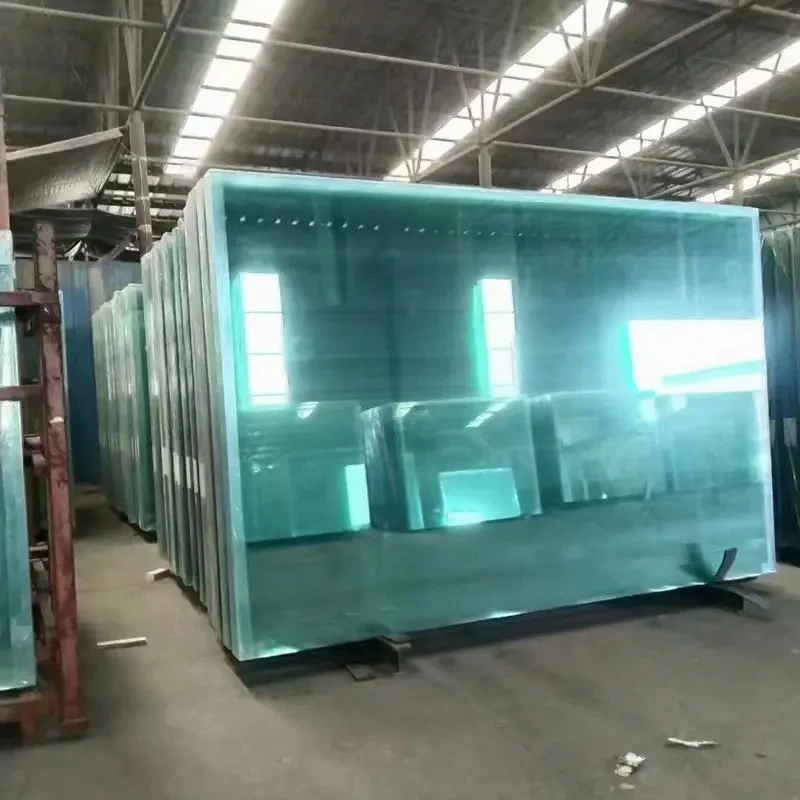Architectural glass has emerged as a revolutionary element in contemporary architectural design, offering unparalleled versatility and aesthetic appeal. For architects and designers, understanding the unique properties and applications of architectural glass can lead to the creation of innovative and sustainable structures that stand out in the built environment.

1. Unveiling Architectural Glass A Material of Modern Marvel
Architectural glass is no longer just a transparent medium of separation; it has transformed into a vital structural component that merges form with function. The evolution of glass-making technologies has facilitated the production of various types of architectural glass, including tempered, laminated, insulated, and low-emissivity glass. Each type presents unique characteristics that enhance building performance, energy efficiency, and aesthetic expressiveness.

2. Enhancing Building Performance with Energy-Efficient Glass
A critical aspect of architectural glass is its contribution to energy efficiency. Low-emissivity (Low-E) glass, for example, is engineered to minimize ultraviolet and infrared light transmission without compromising visible light entry. This results in reduced energy costs for heating and cooling, making it a popular choice for green buildings. Integrating energy-efficient glass into facades can significantly diminish a building's carbon footprint while enhancing indoor comfort.
3. Balancing Safety and Aesthetics The Role of Safety Glass
Safety is paramount in any architectural design, and the use of tempered or laminated glass ensures that buildings are not only beautiful but also secure. Tempered glass is treated with controlled thermal or chemical processes to increase its strength compared to normal glass. Laminated glass, alternatively, consists of two or more layers of glass with an interlayer that holds the layers together even when shattered. Both options are essential in areas prone to natural disasters, high wind loads, or for ensuring the safety of occupants.
4. Architectural Glass in Sustainable Design
Sustainability is at the forefront of modern architectural practice, with architects striving to design buildings that are not only efficient but also environmentally harmonious. Architectural glass plays a vital role in this domain, allowing for natural light optimization—reducing the need for artificial lighting—while providing effective thermal insulation and reducing UV radiation ingress. Implementing strategic glass designs promotes the use of renewable energy sources, like solar panels, when integrating photovoltaic glass systems as part of the building's envelope.
architectural glass ppt
5. Aesthetic Innovations with Architectural Glass
The aesthetic versatility of architectural glass allows designers to delve into creative explorations—transforming ordinary spaces into extraordinary visual experiences. From the dynamic reflections of city skylines in skyscraper facades to the colorful displays of stained glass in modern religious buildings, the aesthetic capability of glass is limitless. Designers can experiment with textures, colors, and coatings to reflect cultural narratives, enhance legibility, or create intimate spatial dynamics.
6. Cultivating Expertise Knowledge is Key
For professionals in architecture and construction, staying abreast of advancements in glass technology is crucial. Regular participation in industry workshops, symposiums, and collaboration with glass manufacturers can build expertise. Knowledge of the latest product innovations and their applications will bolster one's ability to propose efficient, safe, and aesthetically unique design solutions.
7. Trusting Authoritative Sources in Glass Selection
When specifying architectural glass materials, sourcing from reputable manufacturers assures quality and reliability. Trust in providers that comply with international standards, such as ISO certification or LEED green building rating systems, to guarantee the performance and sustainability credentials of glass products.
8. Real-World Experience Case Studies
Examining real-world case studies offers insight into the successful application of architectural glass across various projects. Consider the Shard in London, an exemplary high-rise featuring advanced glass technology that achieves both striking aesthetics and peak performance in energy efficiency. Such case studies exemplify the seamless integration of glass in meeting functional requirements while achieving artistic vision.
In conclusion,
architectural glass stands at the intersection of design excellence and building technology. Its multifaceted applications—from energy-saving features to captivating visuals—make it an invaluable asset in modern architecture. By understanding its capabilities, prioritizing informed material selection, and leveraging industry expertise, architectural glass can be deployed effectively to create innovative, safe, and sustainable buildings that captivate and inspire.
 Afrikaans
Afrikaans  Albanian
Albanian  Amharic
Amharic  Arabic
Arabic  Armenian
Armenian  Azerbaijani
Azerbaijani  Basque
Basque  Belarusian
Belarusian  Bengali
Bengali  Bosnian
Bosnian  Bulgarian
Bulgarian  Catalan
Catalan  Cebuano
Cebuano  Corsican
Corsican  Croatian
Croatian  Czech
Czech  Danish
Danish  Dutch
Dutch  English
English  Esperanto
Esperanto  Estonian
Estonian  Finnish
Finnish  French
French  Frisian
Frisian  Galician
Galician  Georgian
Georgian  German
German  Greek
Greek  Gujarati
Gujarati  Haitian Creole
Haitian Creole  hausa
hausa  hawaiian
hawaiian  Hebrew
Hebrew  Hindi
Hindi  Miao
Miao  Hungarian
Hungarian  Icelandic
Icelandic  igbo
igbo  Indonesian
Indonesian  irish
irish  Italian
Italian  Japanese
Japanese  Javanese
Javanese  Kannada
Kannada  kazakh
kazakh  Khmer
Khmer  Rwandese
Rwandese  Korean
Korean  Kurdish
Kurdish  Kyrgyz
Kyrgyz  Lao
Lao  Latin
Latin  Latvian
Latvian  Lithuanian
Lithuanian  Luxembourgish
Luxembourgish  Macedonian
Macedonian  Malgashi
Malgashi  Malay
Malay  Malayalam
Malayalam  Maltese
Maltese  Maori
Maori  Marathi
Marathi  Mongolian
Mongolian  Myanmar
Myanmar  Nepali
Nepali  Norwegian
Norwegian  Norwegian
Norwegian  Occitan
Occitan  Pashto
Pashto  Persian
Persian  Polish
Polish  Portuguese
Portuguese  Punjabi
Punjabi  Romanian
Romanian  Russian
Russian  Samoan
Samoan  Scottish Gaelic
Scottish Gaelic  Serbian
Serbian  Sesotho
Sesotho  Shona
Shona  Sindhi
Sindhi  Sinhala
Sinhala  Slovak
Slovak  Slovenian
Slovenian  Somali
Somali  Spanish
Spanish  Sundanese
Sundanese  Swahili
Swahili  Swedish
Swedish  Tagalog
Tagalog  Tajik
Tajik  Tamil
Tamil  Tatar
Tatar  Telugu
Telugu  Thai
Thai  Turkish
Turkish  Turkmen
Turkmen  Ukrainian
Ukrainian  Urdu
Urdu  Uighur
Uighur  Uzbek
Uzbek  Vietnamese
Vietnamese  Welsh
Welsh  Bantu
Bantu  Yiddish
Yiddish  Yoruba
Yoruba  Zulu
Zulu 


